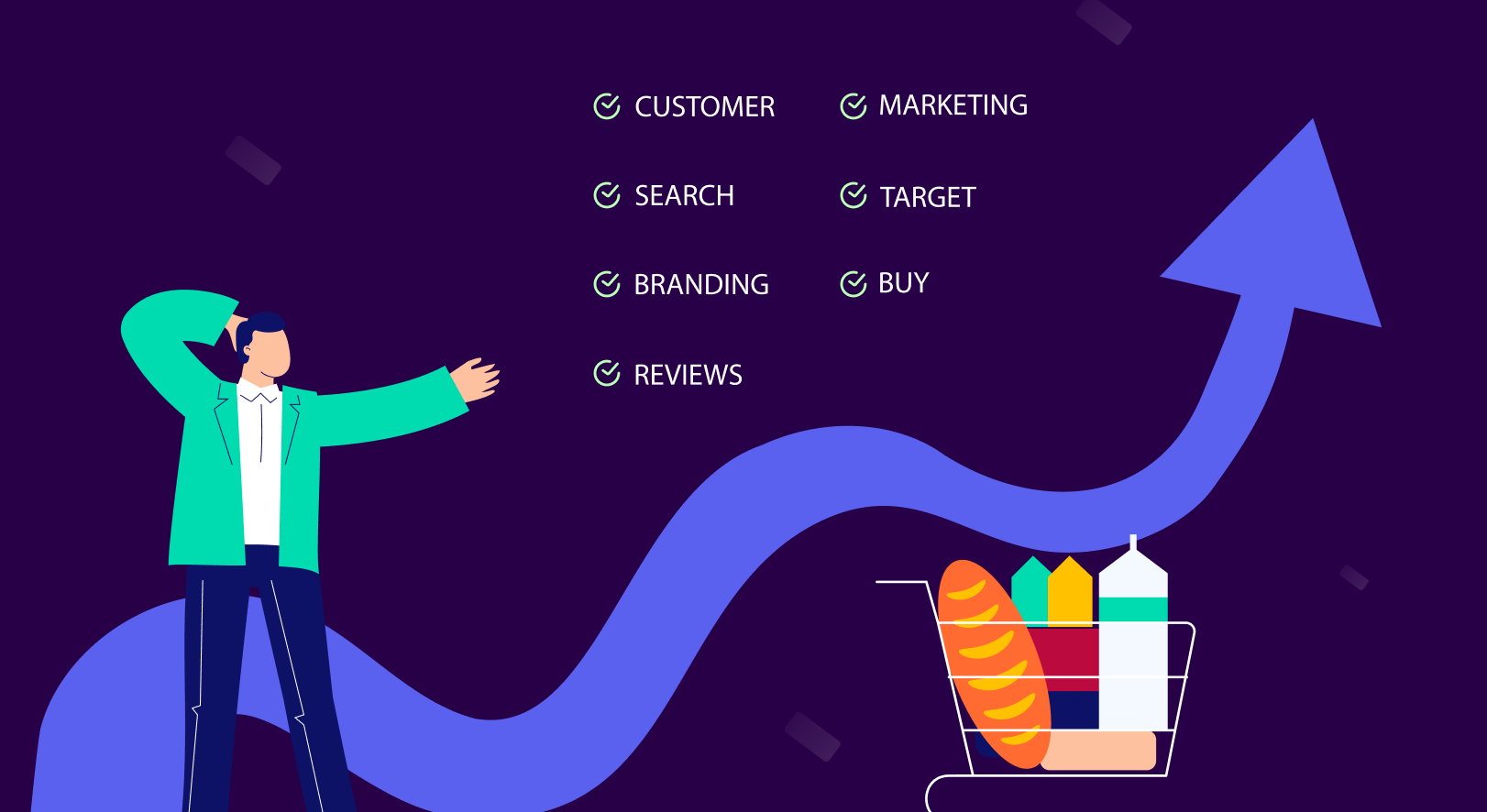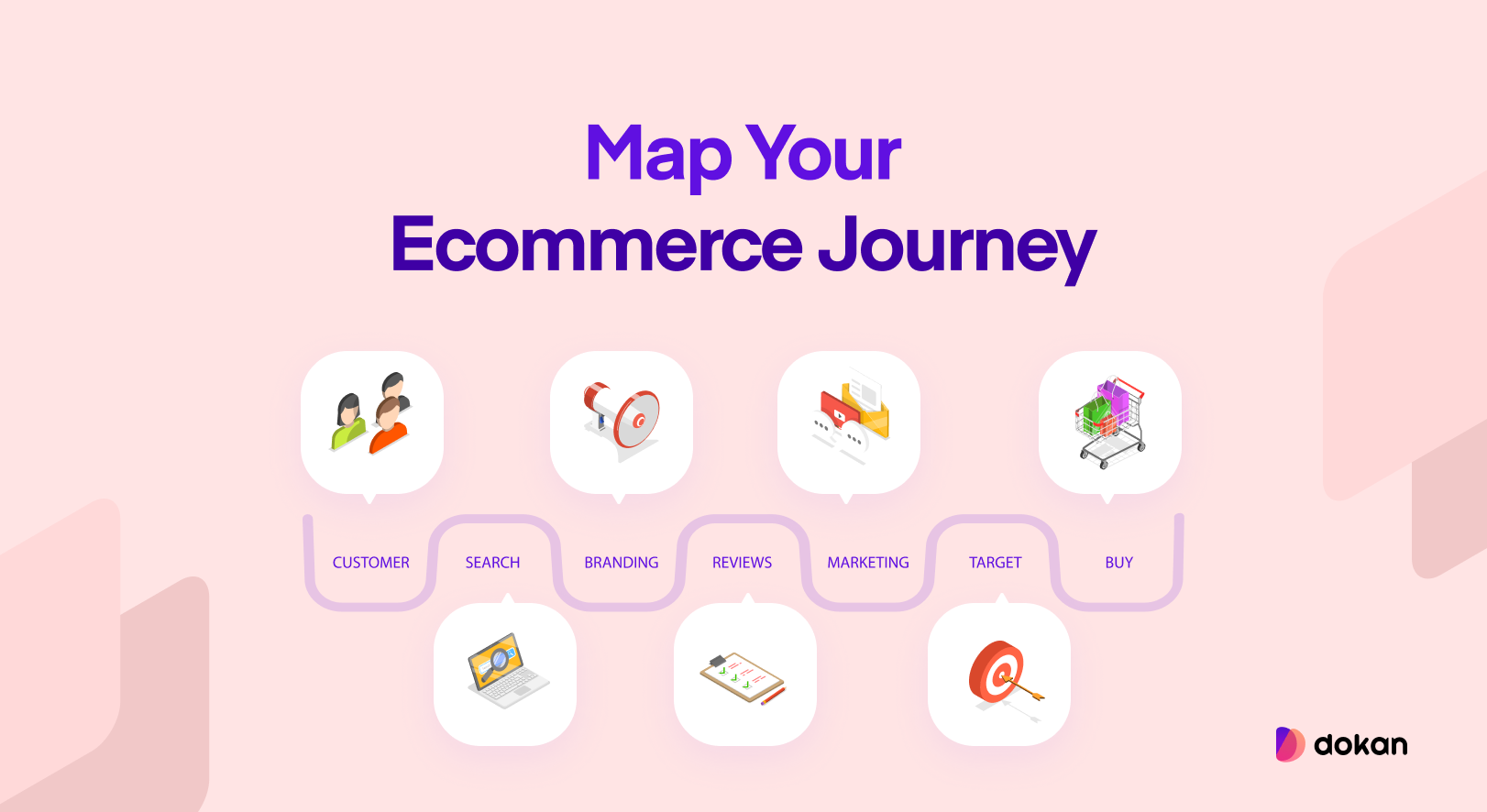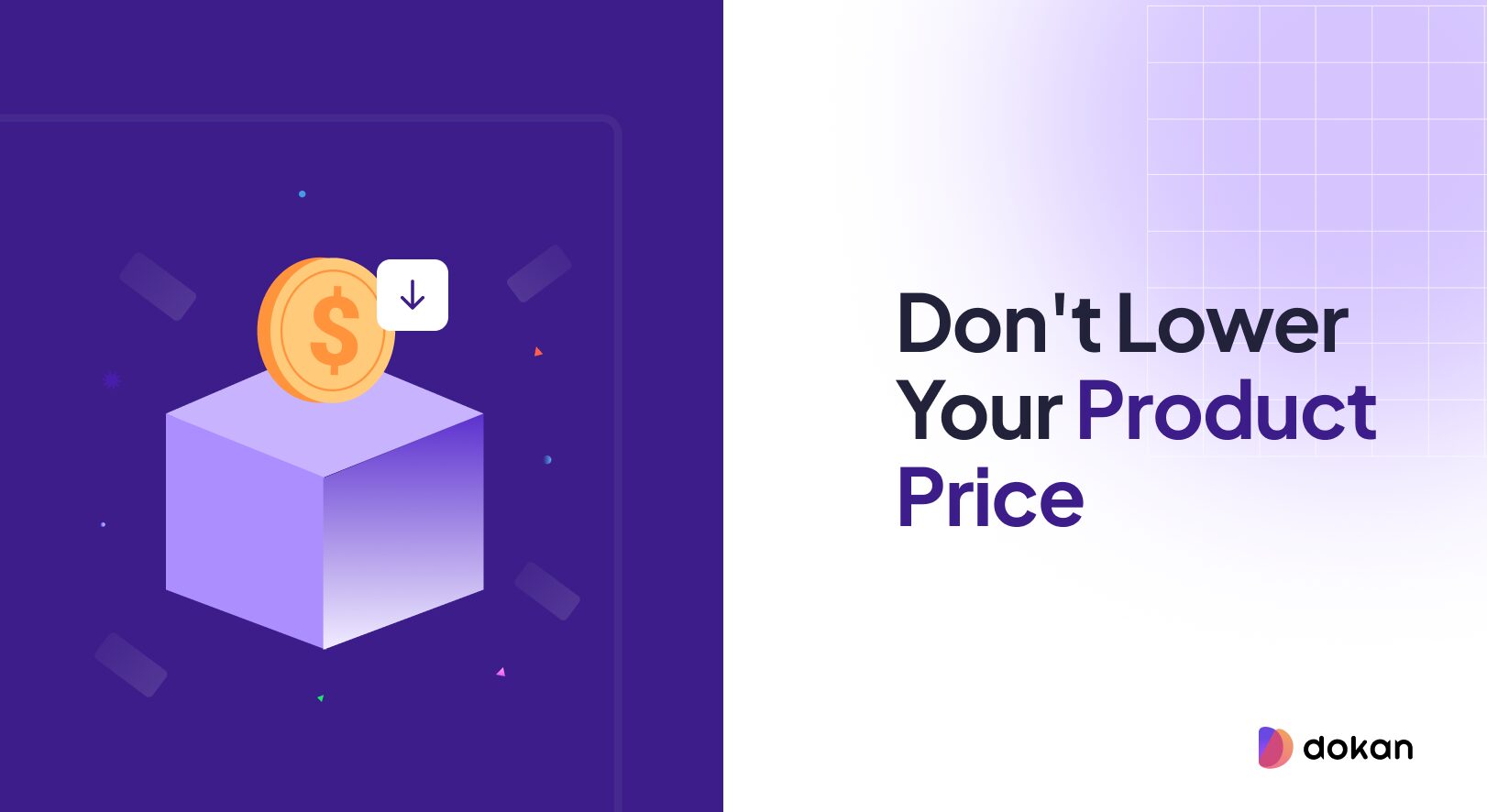Did you know that nearly 90% of new eCommerce businesses fail within the first 120 days? The main reason isn’t poor product quality or lack of traffic. It’s the absence of a clear plan.
Running an online store is more than just uploading products and hoping for sales. You need a roadmap that shows where your business is going, how you will reach your goals, and what resources you need along the way. That’s exactly what a business plan provides.
A well-written eCommerce business plan helps you stay organized, focused, and realistic about your goals. It gives you clarity about your target market, helps you calculate costs, plan marketing campaigns, and measure your progress.
In this guide, you’ll learn how to write a complete eCommerce business plan step by step. You’ll also find real examples and a free editable template to help you get started.
By the end, you’ll have a clear strategy to move your online store in the right direction and make confident business decisions.
What Is an eCommerce Business Plan?

An eCommerce business plan is a written roadmap for your online store. It explains what your business is about, who your customers are, what you plan to sell, and how you’ll earn revenue.
Think of it as a mix between a guide and a checklist. It helps you stay focused on your goals and provides clear direction to streamline all the moving parts.
Unlike a traditional business plan, an eCommerce plan focuses more on the online side of your business. It covers how you’ll promote your store, manage inventory, handle payments, and create a smooth shopping experience for your customers.
For example, imagine you’re planning to launch a handmade skincare brand. A good business plan would outline –
- who your target audience is,
- how you’ll price your products,
- which marketing channels you’ll use, and
- your first-year revenue goal.
💡 When everything is written down, you can see the bigger picture clearly and make better decisions every day.
#Section 1: Executive Summary

The executive summary is the first part of your ecommerce business plan, but it’s usually written last. It’s a short overview that sums up your business idea and what makes it worth paying attention to.
Think of it like your business’s elevator pitch. If someone asked you, “What is your store about?” you should be able to answer it in a few sentences using this section.
A good executive summary includes:
- The name of your store and what you sell
- Your business goals
- A quick description of your target audience
- A summary of your marketing and financial goals
Keep it short, clear, and inspiring. It should give readers a quick idea of what your store does and where it’s heading.
Example:
Business Name: EcoGlow
Overview: EcoGlow sells eco-friendly skincare products made with natural ingredients. Our mission is to make sustainable beauty accessible to everyone.
Goals: Launch with three core products, achieve $10,000 in monthly revenue within six months, and expand our product line to ten items by the end of the first year.
Target Audience: Environment-conscious millennials who value quality skincare products that are safe for both skin and the planet.
When you write yours, imagine you’re explaining your idea to a potential partner or investor who has very little time. It should make them want to learn more about your business.
#Section 2: Company Description
The company description tells the story behind your business. It explains what your store does, why it exists, and what makes it stand out in a crowded market.
Start by describing your business in a few clear sentences. Mention your niche, what products you sell, and who you sell to. Then, share the reason you started the business. A short backstory can make your brand feel more personal and memorable.
Example:
About Us: EcoGlow is an online skincare brand that focuses on sustainable and cruelty-free products. We started in 2024 when our founder, Mia, realized that most skincare brands use too much plastic packaging. She wanted to create a clean beauty brand that’s kind to both people and the planet.
If your business has a special value proposition, highlight it here. Maybe your store offers custom-made items, same-day delivery, or eco-friendly packaging. These small details help people understand why your brand is unique.
You can also include:
- Your business structure (sole proprietorship, partnership, LLC)
- Your location and operations base
- Your vision and mission statements
💡 Tip: Keep your description short but meaningful. Anyone reading it should instantly understand what your brand stands for and what makes it special.
#Section 3: Market Analysis
Market analysis helps you understand where your business fits in the ecommerce world. It’s about studying your industry, your competitors, and your ideal customers. When done right, it gives you the confidence to make smarter decisions from day one.
Start with your target audience. Who are they? What do they care about? What makes them click “buy”? Try to describe your ideal customer as clearly as possible.
“EcoGlow targets environmentally conscious women aged 25 to 40 who prefer natural skincare products. They often shop online, read product reviews before buying, and care about eco-friendly packaging.”
Once you know your audience, look at the market trends. Check if your niche is growing, stable, or seasonal. Tools like Google Trends, Statista, or Exploding Topics can show you how your industry is performing and what people are searching for.
Then move to competitor research. List your top competitors and analyze how they position themselves. Look at their product range, pricing, website design, and marketing strategy.

If you sell handmade candles, study other online candle shops. You might notice that most of them promote on Instagram, focus on scent variety, and use aesthetic photos. This tells you where your market attention is and how you can stand out.
Finally, summarize your findings. Write down what’s working in your market and what’s missing. Maybe your competitors don’t offer subscription boxes or bundle deals. Those insights can become your advantage.
💡 Tip: Try to back up your market analysis with data wherever possible. A simple stat like “The natural skincare market is expected to grow by 6.5% annually through 2028” makes your plan feel more credible.
#Section 4: Product Line and Pricing Strategy
Now that you know your audience and market, it’s time to talk about what you’re selling and how you plan to price it.
Your product line is the heart of your ecommerce business plan. It tells people what you offer, why it matters, and how it stands out from everything else out there.
Let’s take EcoGlow again. The brand started with three core products:
- A gentle cleanser,
- a hydrating serum, and
- a daily moisturizer.
Each product focused on simple, natural ingredients and came in recyclable glass bottles. That small product range made it easier to test the market and gather feedback before expanding.
You can use the same approach. Start with a focused product line that solves a specific problem. Once you see what your customers love, you can add more.
Next comes your pricing strategy. This is where you decide how much to charge and why. Pricing too high can make it harder to attract first-time buyers. Pricing too low can hurt your profit margins.
Here are a few pricing methods you can use:
- Cost-based pricing: Set prices by adding a markup to your production cost.
- Market-based pricing: Match what other similar brands are charging.
- Value-based pricing: Price based on the perceived value your customers see in your product.
EcoGlow chose a value-based approach. Their products weren’t the cheapest, but they reflected quality, sustainability, and design. The EcoGlow Daily Moisturizer was priced at $28, while competitors ranged between $20 and $35. The pricing felt fair for the value customers received.
If you have bundles, subscriptions, or seasonal products, mention them here too. For instance, EcoGlow introduced a “Glow Starter Kit” that combined all three products at a slightly discounted price, which helped increase the average order value.
To make your pricing section stronger, include a small comparison table in your plan showing how your products stack up against others in your niche. It helps investors or readers quickly understand your positioning.
💡 Pro tip: Don’t be afraid to adjust your prices later. Your pricing strategy can evolve as you learn more about your customers and refine your brand positioning.
#Section 5: Marketing and Sales Plan
When you write the marketing and sales section of your eCommerce business plan, your goal is to show how you’ll attract customers and turn interest into revenue. It should give a clear picture of how your store will grow over time.
Start by describing your overall marketing strategy. Explain how you plan to reach your target audience and what makes your approach effective. This can include organic marketing, paid ads, influencer partnerships, SEO, or email campaigns.
Next, talk about your sales strategy. Explain how customers will move from discovery to purchase. Will you rely on discounts, bundle offers, or a subscription model? Write down how you’ll handle seasonal promotions or limited-time campaigns.
Here’s how you can structure this section in your plan:
- Marketing Channels: List the platforms or channels you’ll use and why they matter for your target market. Mention both organic and paid options.
- Content and Campaigns: Describe the type of content you’ll create and how often you’ll post or advertise. Include ideas for social media, blogs, or email newsletters.
- Customer Acquisition Tactics: Explain how you’ll get new customers. This could be influencer collaborations, referral programs, or targeted ad campaigns.
- Customer Retention Strategy: Show how you’ll keep your customers coming back. Loyalty programs, post-purchase emails, and subscription boxes work well here.
- Sales Forecast: Add a brief projection of your expected sales growth for the next 6 to 12 months. Use simple goals like “Reach 500 monthly orders by month six” or “Achieve 25% repeat purchase rate by the end of the first year.”
When you write this section, remember that clarity matters more than creativity. Investors and team members should be able to read it and understand exactly how your business will bring in customers and generate revenue.
#Section 6: Operations Plan
When you write this part, focus on two things:
- how your business operates today and
- how it will scale in the future.
Investors and team members should be able to read it and clearly see how your store functions.
Start by describing your production or sourcing process. If you create your own products, mention where materials come from and how you handle production. If you sell ready-made items, explain how you source them and maintain quality.
For EcoGlow, the plan explained that their skincare products are made in small batches by a local manufacturer. They also outlined their packaging process, which uses recyclable materials to match the brand’s sustainable values.
Next, describe your inventory management and order fulfillment methods. Include how you plan to store products, process orders, and handle shipping or returns. Will you manage inventory in-house or work with a fulfillment center?
You should also cover your supplier relationships and technology stack. Write about the tools you’ll use to manage your store, such as your ecommerce platform, inventory software, CRM, and email automation tools.
Here’s a simple way to structure this section in your business plan:
- Production and Sourcing: How your products are created or sourced.
- Inventory Management: How you track and store stock.
- Order Fulfillment: How orders are packaged, shipped, and delivered.
- Technology and Tools: Which systems you’ll use to run operations efficiently.
- Customer Support: How you’ll handle inquiries, refunds, and complaints.
When you write yours, be specific but keep it practical. The goal is to show that you have a smooth, scalable process that ensures customers always get the best experience from browsing to unboxing.
#Section 7: Team and Management Structure

The team and management section of your eCommerce business plan explains who is running the business and what roles they play. Even if you’re a solo founder right now, this part is still important because it shows how your business is organized and who will handle what as you grow.
Start by introducing the founders or key team members. Mention their names, roles, and what skills they bring to the table.
For example, EcoGlow’s business plan listed a small but skilled founding team:
- Mia Chen, Founder and CEO: Oversees brand strategy, product development, and partnerships.
- David Ross, Marketing Lead: Handles all digital marketing, influencer outreach, and social media campaigns.
- Lina Torres, Operations Manager: Manages inventory, fulfillment, and supplier coordination.
You can also add an organizational chart if your business has multiple departments. It doesn’t need to be complicated. A simple visual or bullet list works fine.
Here’s what to include in this section of your plan:
- Team Overview: Introduce your core team members and their roles.
- Experience and Skills: Highlight relevant experience that supports your business goals.
- Hiring Plans: Mention any key positions you plan to hire in the future.
- Advisors or Partners: If you have mentors or consultants, include them briefly.
EcoGlow, for example, added that they planned to hire a part-time customer support assistant and a freelance content creator within six months of launch. This made the plan feel realistic and growth-oriented.
When you write this section, keep it concise but clear. The goal is to show that your business has capable people (or a plan to bring them in) to manage every key area effectively.
#Section 8: Financial Plan
The financial plan is one of the most important parts of your eCommerce business plan. It shows how your business will make money, what it will cost to run, and how profitable it can become. Even if numbers aren’t your favorite thing, this section gives your plan real structure and credibility.
Start by outlining your startup costs. These are the expenses you need before your first sale. Include costs like:
- Website setup and domain
- Product manufacturing or inventory purchase
- Packaging and branding materials
- Marketing and advertising
- Tools or software subscriptions
Next, include your sales forecast. This is an estimate of how much revenue you expect to make over the next 6 to 12 months. You can base it on your pricing, marketing reach, or average conversion rate.
EcoGlow projected $10,000 in monthly revenue by month six, with an average order value of $35. They used conservative numbers at first to keep their forecast realistic.
Then, outline your expenses and profit margins. Include fixed costs (like hosting, storage, or software) and variable costs (like shipping or ad spend). Subtract those from your projected sales to show your estimated profit.
Here’s a simple way to present it in your business plan:
- Startup Costs: One-time expenses before launch.
- Revenue Forecast: Monthly or quarterly sales projections.
- Operating Costs: Ongoing expenses like marketing, logistics, and tools.
- Profit Margin: What percentage of revenue you expect to keep after costs.
- Funding Needs: If you plan to raise money, explain how much you need and how it will be used.
If you’re not sure where to start, you can use simple tools like Google Sheets or Notion templates to create your financial breakdown. Keep it visual and easy to read.
You’ve now covered the eight most important sections of an eCommerce business plan.
If you’ve followed along and filled in each section, you already have a solid draft of your plan.
Remember, your business plan doesn’t have to be perfect. It’s meant to evolve as your store grows and as you learn more about your customers, products, and market. You can always update it later to match your progress and goals.
Now that you’ve got the structure in place, let’s look at a few common mistakes many people make while writing their business plans and how you can avoid them.
Common Mistakes to Avoid

Even with a solid outline, many new entrepreneurs make small mistakes that can weaken their ecommerce business plan. The good thing is that most of these are easy to avoid once you know what to look for.
Here are some of the most common ones:
1. Being too Vague
Your plan should be clear and specific. Instead of saying we’ll grow through social media, explain which platforms you’ll use, how often you’ll post, and what kind of content you’ll create. The more detailed you are, the easier it is to measure progress later.
2. Skipping Research
Guessing your target audience or pricing without proper research can lead to costly mistakes. Take time to study your competitors, track market trends, and understand customer behavior. Data-backed insights make your plan much stronger.
3. Overestimating Sales
It’s common to project high numbers early on, but that can make your plan look unrealistic. Use conservative estimates based on real data. EcoGlow, for instance, aimed for ten thousand dollars in monthly sales by month six, which was both practical and achievable.
4. Ignoring the Customer Journey
Your plan isn’t only about what you sell. It should also describe how customers will find you, why they’ll choose you, and what will make them return. A clear customer experience plan makes your business stronger.
5. Forgetting to Review and Update
Your business plan should never stay static. Markets change, new competitors appear, and your goals evolve. You should look over your plan every few months and update it based on your latest results.
6. Writing Only for Investors
Even if you’re planning to raise funds, remember that your business plan is first for you. Keep it practical and easy to understand so you can use it as your own guide when making daily business decisions.
Avoiding these mistakes will make your plan much more useful. A good eCommerce business plan grows with your store and helps you adjust as your business expands.
Are you ready to Start Writing your eCommerce business plan?
You can download this template in PDF format, print it, or edit it digitally to fit your business. ⤵️
What Not to Include in Your Business Plan

When you’re writing your eCommerce business plan, it’s easy to get carried away. You might feel tempted to include every idea, detail, or thought that crosses your mind.
But a great eCommerce business plan is clear, focused, and easy to follow.
To make it more effective, here are a few things you should leave out-
- Overly technical details: You don’t need to explain every technical part of your store setup. For example, no one needs to know what hosting server you use or the exact plugins installed on your site.
- Unverified assumptions: Avoid making bold claims like “We’ll get 10,000 customers in the first month” unless you have data or research to support it.
- Personal opinions: Your business plan should be objective. Replace emotional statements like “Our products are the best on the market” with measurable facts such as “Customer testing showed a 95% satisfaction rate.”
- Too much fluff: It’s easy to write long paragraphs that sound nice but don’t say much. Keep your writing short and direct. Every sentence should serve a purpose.
- Unnecessary graphics or design elements: Stick to a simple, clean layout. If you want to use visuals, include charts or tables that add real value, such as a financial summary or sales forecast.
- Irrelevant background stories: While your story matters, don’t turn the company description into a full biography. Keep the focus on your business and its growth potential.
- Copy-pasted templatesUsing a template is helpful, but make sure you personalize it. Add your own research, data, and voice to make it feel real.
A well-written business plan doesn’t need to be long or complicated. It just needs to be clear, focused, and relevant.
Frequently Asked Questions (FAQ)
1. What are the most important things in an eCommerce business plan?
The most important parts are your executive summary, market analysis, and financial plan. These sections show what your business is about, who your customers are, and how you’ll make money. A clear marketing strategy also matters because it explains how you’ll attract and keep customers.
2. What components should a business plan include?
A complete eCommerce business plan usually includes eight key sections:
1. Executive Summary
2. Company Description
3. Market Analysis
4. Product Line and Pricing
5. Marketing and Sales Plan
6. Operations Plan
7. Team and Management Structure
8. Financial Plan
You can also add a short “Review and Next Steps” section to track progress and make updates as your business grows.
3. How long should an eCommerce business plan be?
It depends on your goals. If you’re writing for personal use, a few pages are enough. If you’re creating it for investors, aim for ten to fifteen pages with detailed data, forecasts, and visuals. Focus on clarity rather than length.
4. Do I need a business plan if I’m just starting small?
Yes, even a short plan helps. It gives you direction and helps you make better decisions. You don’t need a complex document; a one-page plan with your goals, audience, and strategy can still guide your early steps.
How often should I update my business plan?
It’s best to review it every three to six months. Your business will evolve, and so should your plan. Update it when you launch new products, change pricing, or set new revenue goals.
6. Should I use a template or start from scratch?
Using a template saves time and keeps your plan organized. You can always adjust it to fit your business needs. If you haven’t already, download the free template from this guide and start filling it in with your own details.
Conclusion: Start Small but Plan Smart
You now know how to write every part of your eCommerce business plan, from describing your idea to planning your marketing and finances.
Here’s a quick recap of what your business plan should include:
- Executive Summary – Introduces your business idea and main goals.
- Company Description – Explains who you are and what makes your store unique.
- Market Analysis – Helps you understand your customers and competitors.
- Product Line and Pricing – Describes what you’re selling and how you’ll price it.
- Marketing and Sales Plan – Shows how you’ll attract and retain customers.
- Operations Plan – Explains how your business will run day to day.
- Team and Management Structure – Defines key roles and responsibilities.
- Financial Plan – Outlines your startup costs, sales forecasts, and profit goals.
Your business plan is more than a document. It’s a tool that helps you turn ideas into action.
If you haven’t started yet, download the free template and start writing. You don’t need to finish everything today. Start small and keep improving it over time.
What part of your eCommerce business plan are you working on right now? Share your thoughts in the comments.
Subscribe to
Dokan blog
We send weekly newsletters, no spam for sure!







Leave a Reply